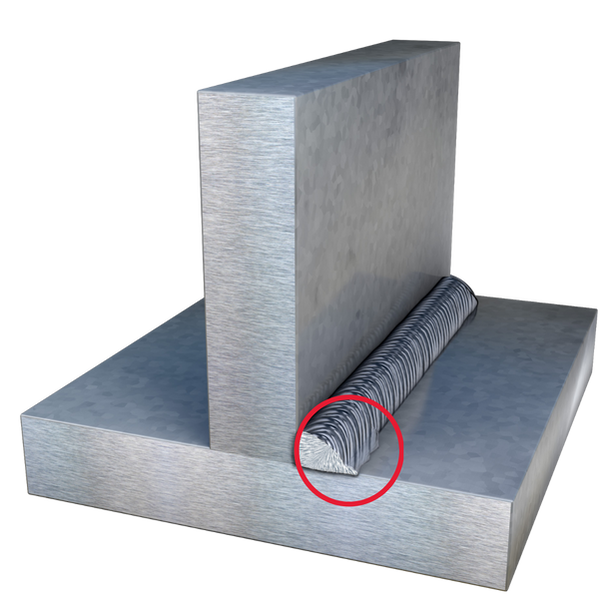Step-by-Step Overview to Preventing Weld Undercut in Different Metals
Wiki Article
Grasping the Art of Welding: How to Prevent Undercut Welding Issues for Flawless Construction Outcomes
By comprehending the root causes of undercut welding and applying efficient strategies to stop it, welders can boost their craft to brand-new degrees of excellence. In the search of perfect fabrication outcomes, mastering the art of welding to prevent undercut problems is not just an ability but a requirement for those striving for perfection in their work.Understanding Undercut Welding

To prevent undercut welding, welders should guarantee correct welding specifications, such as adjusting the current, voltage, travel speed, and keeping the proper electrode angle. By comprehending the causes of undercut welding and implementing preventative measures, welders can attain top notch, structurally sound welds.
Root Causes Of Undercut in Welding
Comprehending the elements that contribute to undercut in welding is important for welders to produce top notch, structurally sound welds. When the weld metal does not properly fill the groove created between the base metal and the formerly deposited weld metal, damaging occurs. Several aspects can bring about undercut in welding. One typical reason is extreme warm input. Welding at heats for extensive periods can lead to the base metal thawing even more than wanted, causing undercut. Poor welding inaccurate or current welding rate can likewise add to undercut. Insufficient current might not provide sufficient heat to melt the base and filler steels sufficiently, while excessive speed can prevent proper fusion, creating undercut. Additionally, incorrect electrode angles or wrong lantern adjustment techniques can develop locations of reduced weld metal deposition, advertising undercut. Recognizing these causes and implementing proper welding techniques can aid prevent damaging problems, making sure resilient and solid welds.Techniques to stop Undercutting

To mitigate the danger of undercutting in welding, welders can employ strategic welding strategies intended at enhancing the high quality and honesty of the weld joints. Additionally, using the appropriate welding strategy for the specific joint setup, such as weave or stringer beads, can contribute to reducing damaging.
Additionally, proper joint prep work, consisting of making certain clean base materials devoid of pollutants and using the ideal welding consumables, is essential in avoiding undercut flaws. Using back-step welding strategies and controlling the weld grain profile can likewise assist distribute heat equally and lessen the danger of undercut. Normal inspection of the weld joint throughout and after welding, along with executing top quality assurance procedures, can aid in identifying and dealing with damaging concerns promptly. By executing these strategies diligently, welders can accomplish flawless manufacture results with minimal undercut flaws.
Relevance of Appropriate Welding Criteria
Choosing and keeping ideal welding parameters is vital for attaining successful welds with very little flaws. Welding criteria describe variables visit their website such as voltage, current, travel rate, electrode angle, and securing gas circulation price that straight affect the welding procedure. These specifications have to be very carefully readjusted based on the sort of material being welded, its thickness, and the welding strategy used.Appropriate welding parameters ensure the correct amount of heat is used to melt the base metals and filler material evenly. If the specifications are set expensive, it can result in extreme warmth input, causing burn-through, spatter, or distortion. On the various other hand, if the parameters are as well low, insufficient combination, absence of penetration, or damaging may happen.
High Quality Assurance in Welding Workflow

Verdict
In final thought, grasping the art of welding needs an extensive understanding of undercut welding, its causes, and techniques to avoid it. By making sure appropriate welding specifications and carrying out high quality guarantee techniques, remarkable manufacture outcomes can be achieved. It is crucial for welders to continually pursue excellence in their welding procedures to prevent undercut problems and generate top quality welds.Undercut welding, an usual flaw in welding procedures, Learn More Here takes place when the weld steel does not correctly fill up the groove and leaves a groove or depression along the welded joint.To protect against undercut welding, welders must make sure why not try here proper welding parameters, such as adjusting the existing, voltage, traveling speed, and maintaining the proper electrode angle. Insufficient welding present or wrong welding speed can also contribute to undercut.To reduce the threat of damaging in welding, welders can employ critical welding techniques intended at boosting the top quality and integrity of the weld joints.In conclusion, grasping the art of welding calls for a thorough understanding of undercut welding, its reasons, and techniques to avoid it.
Report this wiki page